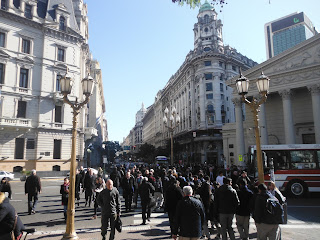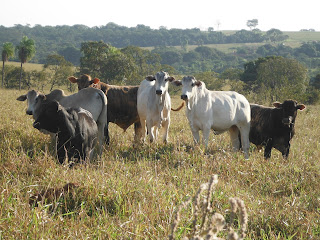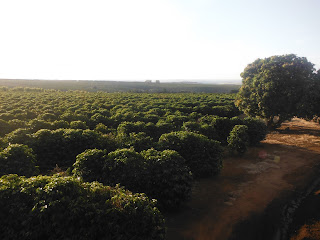 I decided to take a few days at the end of this trip and hit the slopes near Santiago, Chile. My Nuffield travels are over now and these last few days were a break before heading back to work and to the farm. It was an opportunity to ski the Andes and to ski in July. I am only in Chile for 5 days, staying exclusively in the city of Santiago and hitting the slopes for two days. My destination were the El Colorado and Valle Nevado ski resorts about 30 km east of the city.
I decided to take a few days at the end of this trip and hit the slopes near Santiago, Chile. My Nuffield travels are over now and these last few days were a break before heading back to work and to the farm. It was an opportunity to ski the Andes and to ski in July. I am only in Chile for 5 days, staying exclusively in the city of Santiago and hitting the slopes for two days. My destination were the El Colorado and Valle Nevado ski resorts about 30 km east of the city.  |
| This is near the bottom, traffic was stopped for 30 mins due to an accident 2 turns above us. Apparently this rarely happens. |
Last season was a recording setting year for these resorts, they experience an extra long ski season and had heaps of snow. This year they are paying for that great experience. It has been a very dry winter so far and Valle Nevado just opened on July 15th. They typically can open early in June, six weeks late this year and I expect they barely had enough snow to open when they did. No new snow has fallen since before they opened and the daytime temperature is getting above zero routinely. Needless to say, conditions were not ideal. However, you have to make the most of situations like this and I can still say that I have skied the Andes. Adverse conditions make for a better skier and it felt great to get some runs in.
These past few days in Chile I have encountered more people who speak english than anywhere else I have been on this trip. The people are so friendly and helpful. Santiago is easy to get around on the subway and there are many options for getting out into the mountains for hiking and skiing. I only wish I had more time.
There is snow in the forecast so hopefully they can make something out of the winter here yet and I’ll just need to come back.
 |
| The road to Valle Nevado, along the ridge. |











































